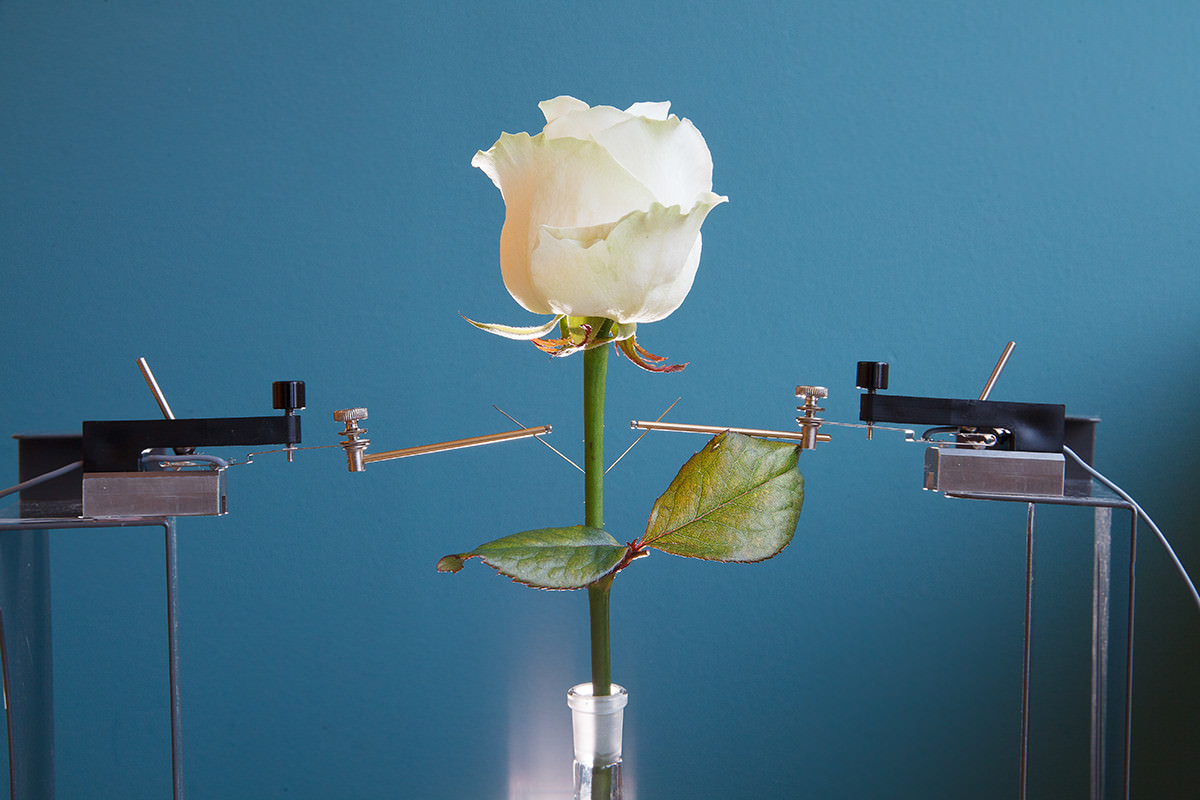vostok
Well-Known Member

The worlds of botany and consumer electronics don’t typically overlap. But a new device has merged electronics with biology, taking a step towards a world in which plants and computers are more intertwined.
The breakthrough came earlier this year in a lab in southern Sweden. Magnus Berggren, a professor of organic electronics at Linköping University, led a team that built a working electronic circuit from an ordinary garden rose by filling its veins with conductive polymer.
The experiment opens the door for electronics that can plug into plants. Living tissues are known to be conductive – with living slime moulds already finding their way into gadgets – and plants are no exception. Propositions dreamed up by scientists include photosynthesis-powered fuel cells and crops that keep tabs on their own physiological properties.
But first, the Linköping team had to figure out whether it was even possible to weave electronics into the flesh of a plant – and they struggled to find a suitable conductive material. It had to be water-soluble, with decent electrical conductivity, and be able to travel through a plant’s vascular system and form wires. Many materials that the researchers tried turned out to be toxic for the rose, clogging up at the opening of the stem or failing to stick to the inner surface of the plant’s veins – the xylem.

leni Stavrinidou, a postdoctoral researcher who did much of the work, went to show Berggren. “When Eleni showed me these beautiful microscope pictures, we understood immediately: we could make circuits out of this,” Berggren says. “The performance, the shape of the wires, were just outstanding, unbelievable.”
The team used the xylem wires to make a transistor – a basic building block of computing and electronics. They tacked gold electrodes and probes along the length of the plant, then connected it to an external resistor and ran a current through it.
In a second experiment, they flushed PEDOT into the rose’s leaves, forcing the polymer into its pores using a basic pressure chamber. When they ran a current across the leaf, they saw its colours changing faintly in response to the voltage.
The Linköping group aren’t the first to try plugging into plant life. In 2012, a team at Disney Research led by Ivan Poupyrev linked orchids with a sensing technology that could measure how electricity moved through the plant. Their project, nicknamed Botanicus Interacticus, allowed the scientists to track and visualise the movements of a human hand along the plant’s body. At Massachusetts Institute of Technology, chemical engineer Michael Strano has created “Iron Man” plants with photosynthesis-boosting nanomachines buried deep inside their chloroplasts.
https://www.newscientist.com/articl...ctric-circuits-running-through-polymer-veins/


